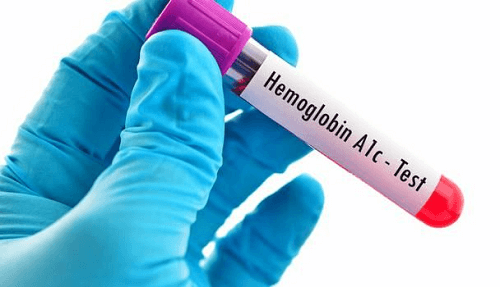What is the full form of HbA1cHbA1c: Hemoglobin A1cHbA1c stands for Hemoglobin A1c, also known as Glycated hemoglobin. When blood glucose binds to hemoglobin, a protein found in red blood cells needed for the delivery of oxygen, the result or outcome is referred to as HbA1c or glycated hemoglobin. More HbA1c is created when there is more glucose in the blood. An individual with diabetes consistently has blood sugar (glucose) levels that are elevated. 
Because high blood sugar levels can be extremely damaging to health, people with diabetes must regularly monitor their blood glucose levels to make sure they do not become too high (or too low). Because of this, determining the levels of HbA1c, a marker of average blood glucose levels, is a practical test to determine whether or not diabetes is being treated properly. It can also be used to determine who is at risk of acquiring this ailment and to diagnose it (called pre-diabetics). HbA1c TestThe HbA1c test is used to assess the blood's glycosylated hemoglobin level. An HbA1c test is advised for diabetics every three to six months and more regularly for individuals who are trying to establish a family, or having trouble controlling their blood sugar or have recently changed their treatment regimen. A healthcare expert performs the test while utilising a blood sample drawn from the arm or from the finger. Normal Range of HbA1cThe average HbA1c for people without diabetes is 36 mmol/mol (5.5%). An optimal HbA1c level for diabetics should be around 48 mmol/mol (6.5%) or lower. An HbA1c reading between 36 and 48 mmol/mol indicates pre-diabetes, characterised by a very high risk of progressing into Type 2 diabetes. Although everyone is unique in their own case, it is important to note that each patient will have to discuss their target range with their healthcare team. The client's health HbA1c level and how quickly the next test is planned will determine the specific purpose of this test. Advantages of reducing HbA1cHigh blood sugar levels that persist in humans can be very harmful to health. Because of this, it is important to carefully track HbA1c levels and, if necessary, reduce them. For example, lowering HbA1c by even 1% (11 mmol/mol) will considerably reduce the chance of developing neuropathy (damage to nerve endings), retinopathy, diabetic nephropathy (kidney disease), heart failure, and vascular disease. The following actions can be taken to reduce high HbA1c values and avoid any potential health risks:
Next TopicFull Form
|
 For Videos Join Our Youtube Channel: Join Now
For Videos Join Our Youtube Channel: Join Now
Feedback
- Send your Feedback to [email protected]
Help Others, Please Share










